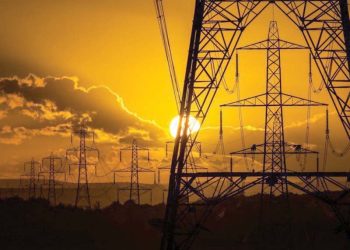According to sources close to the Energy Minister, the caretaker government is expected to fix fertilisers industry feed petrol costs at the industrial rate of Rs 1,260/MMBTU rather than subsidised rates, in response to claims that the fertiliser business is not passing on subsidies to farmers.
If the new proposal is implemented, the price of urea will rise by Rs 800 per bag, from Rs 3,800 to Rs 4,600 per bag, while the imported price of urea is Rs 7,700 per bag.
“Unification of petrol prices would result in savings of Rs 90 billion, which the provinces could channel to small farmers,” the sources noted.
The fertiliser sector visited with interim Commerce and Sector Minister Dr Gohar Ijaz and shared “inside” information about Energy Minister’s plans for a new petrol pricing structure.
Urea spending as a proportion of total input cost currently accounts for 3%, which will climb to 4% after petrol price unification, while the discount relative to international prices will decrease to 40% from 51%. Reduced urea discounts compared to international prices will disincentivize smuggling.
The estimated international urea price for 2024-28 is between Rs 6,500 and Rs 8,500 per bag, however post-unification, domestic urea prices will stay much lower than imported urea.
According to the sources, the suggested rise in Mari petrol prices will only temporarily boost Mari cash flows and fiscal deficit. However, the fertiliser industry’s overall challenges will persist.
Farmers pay Rs 3,800 every 50 kg bag of urea, despite the fact that FFC/ Fatima sets the price at Rs 3,210 per bag, EFERT and RLNG players charge Rs 3,600 per bag, and FFBL charges Rs 3,600. This suggests that the subsidies will continue to be absorbed through informal channels.
According to insiders, the informal channel will continue to charge a premium over the highest of all registered prices, allowing them to take a considerable share of the farmer subsidies. As a result, the non-taxpaying informal channels will continue to profit at the expense of the farmer.
According to the Energy Minister, any considerable depreciation of the rupee would raise the dollar-pegged PP petrol rate, leading in higher urea pricing for manufacturers, while informal channels continue to gain from changing urea prices absorbing subsidies.
Informal channels are already making around Rs 700 per bag of FFC/ Fatima urea, Rs 300 per bag of EFERT, Rs 200 per bag of RLNG players, and Rs 100 per bag of FFBL urea.
“Farmers are buying urea at Rs 4500 per bag because of informal channels,” the sources claimed, adding that frequent price adjustments will continue to fuel speculation and encourage stockpiling and profiteering by informal channels.
The only long-term answer to all basic difficulties is to standardise petrol costs among all fertiliser manufacturers.
One view is that increasing urea prices to international level will have a catastrophic impact on the agriculture sector whereas another view is increasing local urea price to international levels will be a significant deterrent to eliminate smuggling and reduce imports.
The reduction in imports will reduce the trade deficit by $ 75 million and fiscal deficit by Rs 15 billion. To do this feed gas prices will have to be increased significantly to Rs 2,900 per MMBTU from existing Rs 317 per MMBTU.
However, with this, urea price for farmers will increase to Rs 7,500 per bag from existing price of Rs 3,800 per bag. This will have a catastrophic impact on the agriculture sector. On the face of it, this will not only eliminate the subsidy but also generate substantial additional revenue of Rs 200 billion for the government.
One line of thought holds that raising urea prices to international levels will have a disastrous impact on agriculture, whereas another holds that raising local urea pricing to worldwide levels will be a strong disincentive to eliminating smuggling and reducing imports.
Import cuts will reduce the trade imbalance by $ 75 million and the budget deficit by Rs 15 billion. To do this, feed petrol prices must be raised dramatically from Rs 317 per MMBTU to Rs 2,900 per MMBTU.
However, the price of urea for farmers will rise to Rs 7,500 a bag, up from the current price of Rs 3,800 per bag. This will have a disastrous effect on the agricultural sector. On the surface, this will not only abolish the subsidy but also create Rs 200 billion in additional revenue for the government.
This will place an additional burden on farmers and will have a particular impact on the purchasing power/cash flows of 7 million small farmers (90% of total farmers) who already have limited financial resources and rely heavily on Arthis (commission agents) in the normal course of business.
However, this action will cause food inflation and a price increase anytime the rupee falls in value (since urea pricing will be pegged to international parity, like petrol and diesel).
This will also force small farmers to use inefficient and antiquated farming methods, which will have a severe effect on crop output.
To date, the provision of affordable urea through agri-supportive policies has been a primary lever for improving crop yields.
If adopted, this decision will have a major detrimental impact on the agricultural sector and will create a trust deficit among farmers. Furthermore, this may jeopardise the government’s outstanding work to promote large-scale farming, particularly the Green Revolution 2.0 plan.
“Such drastic measures in agriculture will have a disastrous impact on 7 million farming families.” The solution, according to the sources, is a steady increase in gas prices through the implementation of industrial gas rates.
Due to the stagnation of petrol prices in the fertiliser sector, it was discovered that fertilisers businesses are reaping significant profits. For example, FFC’s profit after tax (PAT) will increase from Rs 20.410 billion to Rs 33.165 billion in FY 2023-24. M/s EFERT PAT will increase from Rs 16.003 billion to Rs 17.5 billion, while M/s Fatima Fertiliser will increase from Rs 14.139 billion to Rs 14.494 billion. FFC PAT is expected to be higher due to consecutive urea price hikes without any increase in petrol costs.
The era of cheap petrol and subsidies must come to an end. It puts a pressure on the fiscal deficit, allows for undue profiteering through informal channels, and encourages smuggling, which worsens the trade imbalance,” according to sources quoting Minister.
The fertiliser business receives gas under a variety of pricing regimes, posing major issues.
Subsidies are not passed on to farmers. The government is presently subsidising two-thirds of the fertiliser manufacturers.
The entire subsidy of Rs 90 billion is not reaching farmers and is instead being absorbed by informal channels that do not pay taxes, costing the government an additional Rs 30 billion in revenue. The government is currently losing more than Rs 120 billion through unofficial means.
According to the Minister of Energy, the falling gas pressure at HRL Gas Reserves of Mari is a key worry for all fertiliser manufacturers.
To increase pressure in Mari fields, the fertiliser industry will need to invest $ 265 million. If no investments are made by the fertiliser industry to increase pressure in Mari fields, the government will have to import urea beginning in 2025, resulting in a trade deficit of $ 3-4 billion over five years and a fiscal deficit of Rs 700 billion.
The cost of importing 200,000 tonnes of urea will increase the trade imbalance by $ 75 million and the budget deficit by Rs 15 billion.
Committed gas allocation to fertiliser players will encourage them to make any necessary investments as well as expand further. Investment in Mari pressure improvement will result in long-term gas pressure to the fertiliser sector until 2029.
Fertiliser makers are eager to take on initiatives that will improve production and lower the need for 700,000 tonnes of urea imports over the next two years, resulting in a $ 260 million trade deficit reduction and a Rs 50 billion fiscal deficit reduction.






